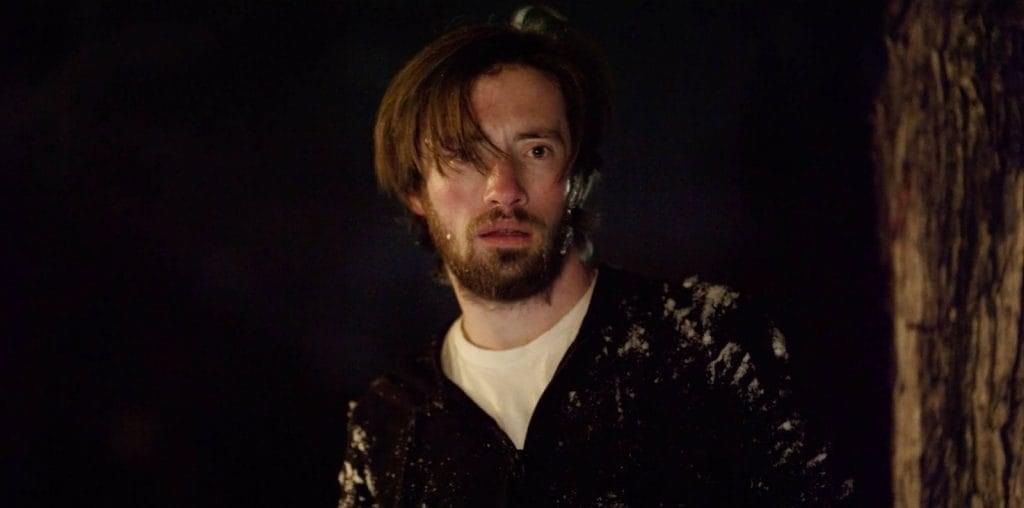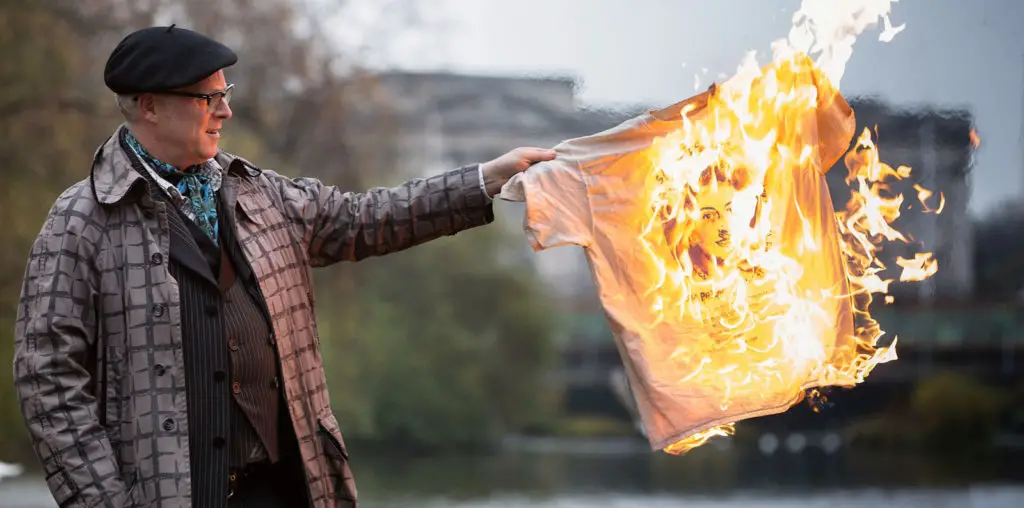
On September 25, 1965, a very unlikely program debuted on ABC-TV. It was “The Beatles,” an animated series inspired by the reigning kings of rock music. In concept, it was a groundbreaking idea. Never before had a Saturday morning TV cartoon show been created which was inspired by music stars and which incorporated the most popular music of the day. In terms of made-for-television programming, it was revolutionary.
But viewed today, nearly 40 years after the show first aired, “The Beatles” is one of the most embarrassing things to witness. While the Beatles’ music remains timeless and peerless, the animated production surrounding the tunes barely reaches the level of puerility. In retrospect, it is astonishing this program was ever allowed on the air.
In November 1964, King Features Syndicate reached an agreement with Brian Epstein, the Beatles’ manager, to create an animated television series about the band. The Beatles and Epstein had no further involvement in the creation of the series, aside from licensing the band’s songs for inclusion in the cartoons. This is probably the first place where “The Beatles” went very wrong.
The series was helmed by Al Brodax and George Dunning, who decided that the speaking voices for the animated Beatle characters should be easier on American ears than the singers’ natural Liverpool speech patterns. Brodax and Dunning were not the first people who feared that the Beatles would be unintelligible to Americans – when United Artists received the print of “A Hard Day’s Night,” a serious internal debate commenced regarding whether the dialogue should be dubbed by American actors. But whereas United Artists left well enough alone, Brodax and Dunning decided to give the Beatles crisp and clean diction which seemed more fitting of a Noel Coward drawing room comedy than the working class rockers from Liverpool. American actor Paul Frees, who provided voice performances for many cartoons including “Rocky and Bullwinkle” and “George of the Jungle,” was hired to play John and George. British actor Lance Percival was brought in to play Paul and Ringo. None of the voices even vaguely resembled the Beatles, and Frees’ concept of John sounded closer to Rex Harrison with a posh, polished pronunciation.
To speed along production, Brodax and Dunning outsourced the animation to studios around the world. At one time, the episodes of “The Beatles” were being created by studios in England, the Netherlands, Canada, Australia and Mexico. The concept of the Beatles’ cartoon personas were silly to begin with – exaggerated caricatures which made them look ridiculous – and the studios employed to animate the cartoons didn’t bring any sense of continuity in their work. Therefore, the physical appearance of the Beatles varied wildly from cartoon to cartoon; it is very obvious the episodes were made by different studios working independently of each other.
If this wasn’t bad enough, the scripts for “The Beatles” were too dumb to believe. Either the Fab Four were being chased by rabid female fans or they were encountering a variety of monsters, spies, mad scientists, criminals, or wild animals. Each episode of “The Beatles” consisted of two five-and-a-half minute cartoons with some wacky adventure pegged to a Beatles song. The connection between song and plot was often strained – for example, the Beatles inexplicably rent a Transylvania castle to rehearse for a night, and a brigade of vampires and ghosts come out to twist and shake while the band plays “A Hard Day’s Night.” Get it, a hard day’s night…and vampires and ghosts come out at night? (Pause for reader to groan.)
The cartoons also involved a fair amount of politically incorrect humor. Since the episodes took place in a variety of exotic locations, racial and ethnic humor was inevitably brought in to spice up the fun. What may have seemed amusing in the mid-1960s is appalling by today’s standards.
Besides these contrived cartoons, “The Beatles” also offered sing-a-longs in which the lyrics of the songs would flash on the screen while crude animated interpretations of the composition would accompany the performance. The wraparound to these segments took place in a supposedly empty theater where either John, George or Paul speaking directly to the viewer while Ringo played the inept prop man who tried and failed to set the proper atmosphere for each song.
When the Beatles finally got to see “The Beatles,” their reaction ranged from indifference to bemusement. Ringo reportedly found it hilarious that his character was made to be, in his words, the “dum-dum” of the episodes. But Brian Epstein was thoroughly unamused by the cartoons and prevented them from being seen on British television. In fact, British viewers never saw “The Beatles” until 1980.
“The Beatles” was a huge success during its first ABC season and the program was renewed for a second go-round. The show also enjoyed a strong degree of commercial success thanks to an aggressive marketing campaign which sold a flood of merchandise based on the cartoon characters. But the 1966-67 season was not as successful. A new interest in action superhero cartoons ate away at the popularity of “The Beatles.”
Brodax and Dunning stopped producing “The Beatles” in 1967 in order to commence work on another Beatle-related animation project, the feature film “Yellow Submarine.” Incredibly, they originally planned to use the caricatures from the TV show in the movie. But as the Beatles’ physical appearance changed from the mop-top jubilance of their early success to the more flamboyant sartorial trappings of the “Sgt. Pepper” album, Brodax and Dunning switched their design plans.
ABC-TV kept the 39 episodes of “The Beatles” in reruns from 1967 through 1969, although in the later stage of the run the cartoons were switched from the highly coveted Saturday morning spot to the low-rated Sunday morning berth. In 1970, Gold Key Entertainment picked up the rights to the show and syndicated it in local TV markets. Even though the Beatles had broken up, the show still had its core audience of die-hard Beatlemaniacs.
By the mid-1970s, however, “The Beatles” completely vanished from sight in America. The cartoons were shown on Australian television through the early 1980s and reportedly continued to play in other countries. In 1986, “The Beatles” quietly returned to America with a barely-promoted run on MTV. Nearly all of the today’s videos for “The Beatles” can be traced to this broadcast.
“The Beatles” were last seen on British televison in 1988. Legal struggles over the ownership of the show took the episodes off the air, and it was not until 1996 before the Beatles’ Apple Corp. Ltd. gained complete ownership of the property. Since this occurred, no plans were ever announced for an official home video or DVD release of the series. Bootleggers, however, filled the void for years and their videos and DVDs can easily be found on the Internet and at Beatles’ fan conventions.
Net surfers who’ve never seen “The Beatles” can catch one of the episodes online: an unauthorized RealMedia presentation of the “Strawberry Fields Forever” cartoon can be found on the Toon Tracker site. But if you’ve never seen “The Beatles,” you honestly are not missing much. “The Beatles” is a clumsy and crude animated series which is genuinely not worthy of the Fab Four or their music. Rumors have persisted for years that a video compilation of the cartoons is pending. If the surviving Beatles and their managers ever think about dusting off and re-releasing the cartoons, hopefully they will heed the words of Mother Mary and let it be.
IMPORTANT NOTICE: The unauthorized duplication and distribution of copyright-protected material is not widely appreciated by the entertainment industry, and on occasion law enforcement personnel help boost their arrest quotas by collaring cheery cinephiles engaged in such activities. So if you are going to copy and sell bootleg videos, a word to the wise: don’t get caught. The purchase and ownership of bootleg videos, however, is perfectly legal and we think that’s just peachy! This column was brought to you by Phil Hall, a contributing editor at Film Threat and the man who knows where to get the good stuff…on video, that is.


I`m sorry, but as a Beatles fan,I can say that this cartoon is complete garbage, and then some. Thank the fates that more like it arent being made anymore.
2/20/15
RobGems.ca Wrote:
I remember seeing these on Detroit’s Channel 20(WPON) back in 1977;I thought some of them were funny, but others were corny as hell. John Lennon reportedly disliked this cartoon series the most of the four Beatles, dismissing the show with this comment: “They made us look like the bloody Flintstones.” Al Brodax already made cheap TV cartoons starring Popeye, Krazy Kat, Snuffy Smith, and Beetle Bailey back in 1961-63, and had at least three different animation studios working on them (including Seymour Knetchal at Paramount Animation, who was amazed by the low budget quality for quanity techniques, stating “We Should Have Thought Of This Years Ago.” (referring to making low-quality cartoons to theatres for less amount of money.) The same low-budget approach shows on “The Beatles”, though it is still fun at times. Brodax apparently spent more money on the “Yellow Submarine” movie.
This is hilarious — I wrote this column five-and-a-half years ago, and it is only now getting feedback!
I guess I hate to be the one to say I loved these stupid cartoons since it was my first intro to The Fab Four as well. Some stations like one out of Chicago in the early 80’s supposedly aired the show through syndication as King Features had distribution of it then. Then of course there’s the reruns on MTV around ’87 and even a chance airing on The Disney Channel by 1990.
The only positive thing out of this perhaps was Brodax OK’ing the idea for a feature film that got released and lauded over for decades, Yellow Submarine (at least something good came out of it, and certainly one of Dunning’s best).
As dreadful as the voice performances are to 2010 ears, and as crude as the animation looks to 2010 eyes, in the mid-Sixties, those of my age cohort–born in the late 50’s//early 60’s–adored these cartoons. For late boomers like me, these cartoons were likely the first exposure we had to The Beatles. And for little ones–I was 3 1/2 when the cartoon debuted–it was potent stuff, laying the seeds for a more sophisticated appreciation later in the decade on into the 1970’s. So while I agree with you that this is pretty awful stuff now, if you were a little kid in the mid to late ’60s this is sacred nostalgia!
These cartoons were one of the more positive things run on ABC in those years. In those years, ABC’s shows only ran one and one-half seasons; they ordered enough episodes to provide some new stuff at the start of a second year, but they wouldn’t generally commit to a second full season.
Another factor; the Beatles songs licensed for this show were often their album filler. The more political and sociological stuff they wrote was considered inappropriate for the show. In the “second” (again, the one-and-a-half) season of the show, the opening titles used a different song, and showed photos of the Sergeant Pepper Beatles quickly turning into the cartoon Beatles used in the show. That was as close to the flower-power Beatles stuff that the show dared to approach.
The little song played over the titles of each cartoon – guitar strings played in tune-up mode – were used in the end credits of another Al Brodax cartoon, Cool McCool, over the “King Features” end title.